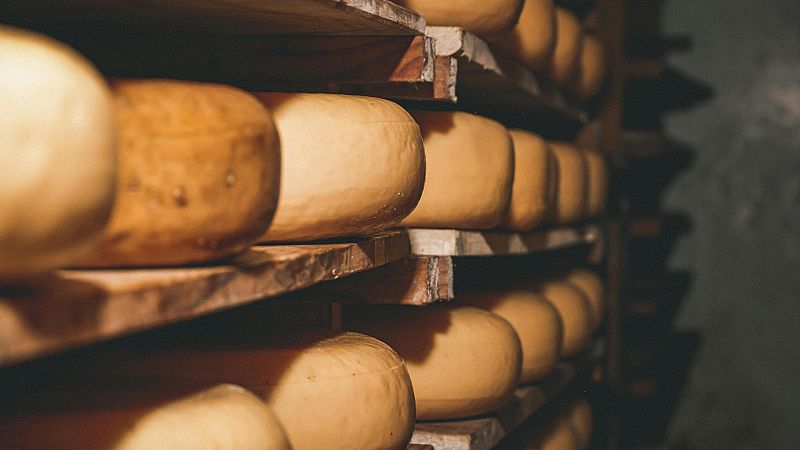
Europe is a continent steeped in history and tradition, and its culinary landscape is no exception. While familiar favorites like Camembert and Mozzarella enjoy global recognition, a treasure trove of lesser-known, ancient cheeses remains hidden in its remote corners. These cheeses, often crafted using centuries-old methods, offer a unique glimpse into the cultural identity and resilience of the regions where they originate. This journey explores some of Europe's more obscure and remarkable cheeses, from the dramatic mountains to remote villages.
Pule Cheese, Serbia: The World's Rarest Delicacy
Begin your cheese pilgrimage in Serbia, in search of Pule cheese, often hailed as the world's rarest and most expensive. This unique cheese is exclusively produced at the Zasavica Donkey Reserve, made from the milk of endangered Balkan donkeys. The sole cheesemaker, Slobodan Simić, oversees the production of this coveted cheese.
Pule cheese boasts a rich, nutty, earthy, and subtly sweet flavor profile. The rarity and high cost (around €1,000 per kilogram) stem from the fact that approximately 25 liters of donkey milk are needed to produce just one kilogram of cheese. The low milk yield of the Balkan jennies (female donkeys), which must be milked up to three times daily, coupled with conservation efforts and donkey care costs, contribute to its premium price.
While visiting the Zasavica Donkey Reserve, you can also sample other products made from donkey milk, such as cosmetics and liqueurs. The reserve offers a chance to observe native animals like beavers and Mangalica pigs and enjoy peaceful river cruises or picnics.
Gjizë, Albania: A Taste of the Highlands
From Serbia, venture to Albania to discover gjizë, a soft, strained curd cheese deeply ingrained in Albanian highland traditions. In the Accursed Mountains, locals craft this cheese in small stone farmhouses, often preserving it in clay pots with olive oil, peppers, and herbs.
Gjizë is made by acidifying milk with citric acid or yoghurt, resulting in a dry, sour, ricotta-like flavor. It's a key ingredient in traditional Albanian dishes like Fërgesë. For an authentic tasting experience, consider staying with a local family in remote villages such as Theth or Valbona.
While in the Albanian Alps, hike the renowned Valbona-Theth Trail, explore the Theth Blue Eye (a stunning turquoise spring), visit the Grunas Waterfall and the Theth Church. In Valbona, discover the Old Mill of Valbona, Xhema Lake, or take a scenic ferry ride on Lake Koman.
Caciocavallo Podolico, Italy: A Seasonal Treasure
Travel to Basilicata, Italy, to savor Caciocavallo Podolico, a highly seasonal and rare cheese. This pear-shaped cheese is made from the milk of Podolica cows, a semi-wild breed native to southern Italy. The cheeses are aged for months, even years, hung from rafters with rope.
The Podolica cows roam freely for most of the year, grazing on wild pastures filled with diverse grasses and herbs, which impart a unique, complex, and spicy flavor to the cheese. Expect savory notes of herbs, smoke, and toast, balanced by fruitiness and tang. Younger cheeses are more delicate and sweet, while older ones develop a tangy and spicy flavor with a semi-hard texture.
To taste this elusive cheese, consider staying in mountain dairies or agriturismos (Italian farms) around the Pollino National Park. You can participate in agricultural activities, olive oil production, wine tastings, truffle hunts, and cooking classes, while contributing to the preservation of these rural areas.
Ziger, Switzerland: A Peasant's Survival Food Reimagined
Journey to the Bernese Oberland region of Switzerland to sample ziger, an ancient whey cheese often flavored with alpine herbs. Made from leftover whey from other Swiss cheeses, such as Emmental, ziger was once considered a staple for peasants.
Glarner Schabziger, a specific type of ziger cheese, is known for its distinctive lime-green color, spicy, pungent flavor, and hard, gritty texture, due to the addition of ground blue fenugreek. It is primarily used as a condiment over potatoes and pasta or mixed with butter as a spread.
Despite being Switzerland's oldest protected food brand, Glarner Schabziger remains relatively unknown outside of specific Alpine regions. You can find ziger at farmers' markets in the Bernese Oberland region and Uri, as well as mountain dairies.
Milbenkäse, Germany: Aged with Mites
Travel to Würchwitz, Germany, to taste milbenkäse, a unique cheese aged with cheese mites. This ancient cheese dates back to the Middle Ages. Quark cheese balls, flavored with salt and caraway, are aged in wooden boxes with cheese mites and rye flour for several months.
The live cheese mites burrow through the quark and excrete digestive enzymes, aiding in fermentation and ripening. The rind turns yellow, then reddish-brown, and finally black, depending on the aging time. Milbenkäse has a sharp and tangy taste, with a zesty, bitter aftertaste, similar to Harzer cheese.
The Würchwitz Milbenkäse Manufaktur is the only commercial producer of milbenkäse today. The village celebrates its cheese heritage with the Mite Cheese Museum and a cheese mite memorial.
Urgelia, Spain: A Pyrenean Rarity
Conclude your cheese journey in the Catalan Pyrenees of Spain, where you can try urgelia cheese. This soft washed-rind cheese is found only in a few Pyrenean valleys.
Urgelia cheese is made from pasteurized cow milk and aged for at least 45 days, during which the rind is washed repeatedly with a yeast brine. It has a slightly salty, robustly buttery taste with occasional hints of acidity or bitterness and underlying nutty and fruity notes. The orange-brown rind gives it a mild mushroomy or earthy aroma.
The Alt Urgell region also offers opportunities for adventure sports, such as kayaking, white water rafting, mountain biking, hiking, and skiing. Consider hiking along ancient Pyrenean cheese routes to smaller farms for a more authentic experience.

No comments:
Post a Comment